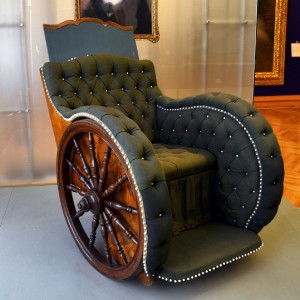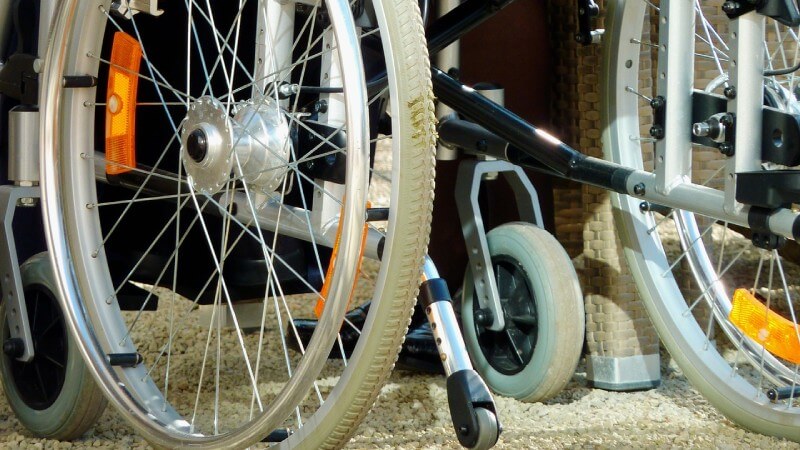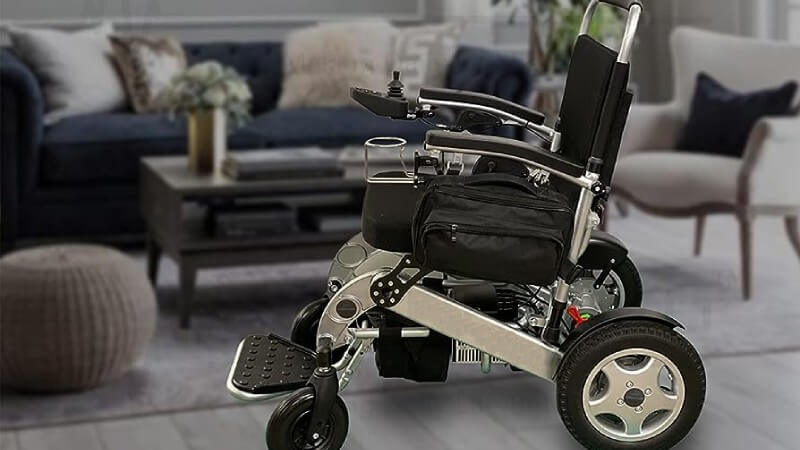When Were Electric Wheelchairs Invented? A Deep Dive into Their History
Mobility has always been a fundamental aspect of human existence. Over the centuries, as societies evolved and technologies advanced, the tools and devices designed to aid mobility have undergone significant transformations. This journey, from rudimentary aids to sophisticated devices, reflects humanity’s relentless pursuit of innovation and inclusivity.

The Ancient Beginnings
- The Wheelchair’s Ancestral Roots: One of the earliest known references to a mobility device resembling a wheelchair dates back to the time of Confucius in the 5th century B.C. This rudimentary version served its purpose, aiding those with mobility challenges.
- Walking Aids Through the Ages: Walking sticks, an age-old mobility aid, have been used for millennia. Their primary function was to provide support, especially for the elderly.
The Renaissance of Mobility Devices
- The Royal Connection: In 1595, King Felipe II of Spain utilized a rather advanced wheelchair for its time, equipped with both arm and footrests. This marked a significant step in the evolution of personal mobility devices.
- The 18th Century Revolution: This period witnessed the emergence of a wheelchair design that closely resembles contemporary models. It featured two large front wheels complemented by a smaller rear wheel.
Modern Advancements

- The Birth of the Electric Wheelchair: While the concept of an electrically driven wheelchair was introduced in 1924, it wasn’t until 1950 that George Klein designed the first electric wheelchair propulsion. This invention was primarily to assist World War II veterans with severe mobility impairments.
- Mobility Scooters: Introduced in the late 1960s and early 70s, mobility scooters became popular as an alternative to electric wheelchairs. Designed for individuals who could walk but faced challenges covering long distances, these scooters bridged a crucial gap in the mobility spectrum.
The Significance of Electric Wheelchairs
The invention of the electric wheelchair marked a pivotal moment in the history of mobility devices. It not only provided enhanced mobility but also instilled a sense of independence among users, especially those with severe physical limitations. The electric wheelchair became a symbol of hope, freedom, and empowerment, transforming countless lives.
Ancient Mobility Devices
Ancient Mobility Aids in Greece and China
Long before the invention of modern mobility devices, ancient civilizations had their own solutions to aid those with mobility challenges. In the realms of ancient Greece and China, around the sixth century AD, rudimentary mobility aids were employed to assist the elderly and those with disabilities.
- Greece: The Greeks, known for their advancements in various fields, also delved into creating mobility aids. Although detailed specifics are scarce, it’s evident that they recognized the need for such devices.
- China: Similarly, ancient Chinese civilizations, with their vast knowledge in medicine and engineering, developed basic mobility aids. These devices, though primitive, showcased the early understanding of human ergonomics and the need for mobility support.
The Elaborate Chair for King Philip of Spain
In 1595, a significant development in the history of mobility aids took place. King Philip II of Spain, suffering from gout, a painful arthritic condition, required a mobility solution. To address this:

- Invention of the Chair: A special chair was designed for the king. This wasn’t just any chair but an elaborate one, tailored to provide comfort and support to the ailing monarch. It can be seen as a precursor to the modern wheelchair, emphasizing the importance of personalized mobility aids.
- Significance: This chair not only served King Philip but also highlighted the evolving understanding of mobility challenges and the need for specialized devices. It was a testament to the lengths humans would go to ensure comfort and mobility for those in need.
The journey from ancient mobility aids to the sophisticated electric wheelchairs of today is a testament to human ingenuity and the persistent quest to improve quality of life. As we delve deeper into this topic, we’ll uncover more fascinating milestones in the evolution of mobility devices.
The Birth of the Modern Wheelchair
The Bath Wheelchair: A Revolutionary Design
In 1783, a transformative moment in the history of mobility aids occurred. John Dawson, a resident of Bath, England, introduced the world to the Bath wheelchair. This wasn’t just any wheelchair; it was a design that would set the standard for many wheelchairs to come. The Bath wheelchair was characterized by:

- Innovative Design: Unlike its predecessors, the Bath wheelchair had two large wheels at the back and one smaller wheel in the front, providing better stability and maneuverability.
- Comfort: Designed with the user’s comfort in mind, it featured a padded seat and backrest.
- Practicality: The Bath wheelchair was not just for indoor use. Its robust design made it suitable for outdoor terrains, allowing users to venture outside with ease.
The 1869 Patent: A Step Towards Modernization
While the Bath wheelchair was a significant advancement, the world of mobility aids was about to witness another groundbreaking moment. In 1869, a patent was filed for a new wheelchair design. This design incorporated:
- Enhanced Mobility: The new wheelchair was more user-friendly, allowing individuals to move with greater ease.
- Durability: Made with sturdy materials, it was built to last, ensuring that users could rely on it for years.
- Customization: Recognizing that one size doesn’t fit all, this wheelchair could be tailored to meet individual needs.
The introduction of the Bath wheelchair and the patenting of a new design in 1869 marked pivotal moments in the evolution of wheelchairs. These innovations not only provided enhanced mobility to those in need but also paved the way for the modern wheelchairs we see today.
As we reflect on these milestones, we’re reminded of the importance of continuous innovation and the impact it can have on improving the quality of life for many.
Advancements in Wheelchair Design in the 19th Century
The 19th century witnessed remarkable innovations in wheelchair design, paving the way for the modern wheelchairs we see today. These advancements not only enhanced the mobility of individuals with disabilities but also significantly improved their quality of life.

Introduction of Rubber Wheels (1867-1875)
- Evolution in Mobility: The introduction of rubber wheels marked a significant leap in the evolution of wheelchair design. These wheels provided smoother rides, reducing the jarring and discomfort experienced with earlier designs.
- Durability and Comfort: Rubber wheels were more durable and offered better traction, ensuring a safer and more comfortable experience for the user.
- Adaptability: The adaptability of rubber wheels allowed for their use in various terrains, making it easier for individuals to navigate different environments.
Significance of Push Rims (Introduced in 1881)
- Enhanced Propulsion: Push rims revolutionized the way individuals propelled their wheelchairs. By allowing users to push on the rims instead of the wheels, it became easier and more efficient to move the wheelchair.
- Independence and Control: Push rims gave users greater control over their movement, fostering a sense of independence.
- Safety: With push rims, users no longer had to touch the tires, reducing the risk of injuries and ensuring cleaner hands.
The 19th century was a pivotal period in the history of wheelchair design. The introduction of rubber wheels and push rims were groundbreaking innovations that transformed the lives of many.
These advancements underscore the importance of continuous innovation in enhancing the mobility and independence of individuals with disabilities.
Early Motorized Wheelchairs
The Dawn of Motorized Mobility
In the bustling streets of London, 1916, a remarkable invention made its debut. It was the first motorized wheelchair, a groundbreaking innovation that promised a new era of mobility for those who needed it most. This invention wasn’t just a testament to human ingenuity, but also a beacon of hope for many.

The Evolution of the Wheelchair
- 1916: The first motorized wheelchair was introduced in London. This was a significant leap from the traditional manually operated wheelchairs, offering users a newfound sense of independence.
- 1932: Enter Harry Jennings. This visionary introduced the modern folding wheelchair, a design that was not only functional but also convenient for users. This wheelchair could be easily folded and transported, making it a favorite among many.
The Impact of These Innovations
The introduction of these wheelchairs was more than just technological advancements. They symbolized freedom, autonomy, and a better quality of life for their users.
Imagine the joy and relief of someone who, for the first time, could move around without being entirely dependent on others. These inventions were not just pieces of equipment; they were lifelines.
A Glimpse into the Future
As we look back at these milestones, it’s exciting to imagine what the future holds. With the rapid advancements in technology and design, the next generation of wheelchairs might just be around the corner, waiting to revolutionize mobility once again.
The Emergence of Electric Wheelchairs
The Pioneering Spirit of George Klein
In the aftermath of World War II, the world was grappling with the devastating impact of the conflict. Among the millions affected were veterans who had sustained injuries that limited their mobility.
Recognizing the pressing need for enhanced mobility solutions, George Klein, a visionary from the National Research Council of Canada, took on the challenge. In 1953, he introduced the electric-powered wheelchair, a device specifically designed to assist these injured veterans. This wasn’t just a machine; it was a symbol of hope, resilience, and the indomitable human spirit.
Challenges and Innovations in Early Electric Wheelchair Designs
The journey of the electric wheelchair from its inception to its modern form was not without challenges:
- Early Limitations: The initial designs, while revolutionary, had their limitations. They were bulkier and often not as maneuverable as their manual counterparts. Adapting to different terrains and ensuring a reliable power source were among the primary concerns.
- Design Evolution: Over time, innovations led to more refined and user-friendly designs. The introduction of differential steering allowed for better maneuverability, enabling users to turn the wheelchair within its own length.
- Battery Advancements: The electric motors of these wheelchairs required a reliable power source. Advancements in battery technology, particularly the development of rechargeable deep-cycle batteries, played a crucial role in enhancing the efficiency and reliability of electric wheelchairs.
The Legacy of Electric Wheelchairs

The electric wheelchair was more than just a technological marvel; it was a testament to human ingenuity and the relentless pursuit of improving lives. It gave many individuals the gift of mobility, independence, and a renewed sense of purpose.
As we reflect on its history, we are reminded of the countless stories of resilience and determination that have been intertwined with its evolution.
Looking Ahead
The journey of the electric wheelchair is a testament to the power of innovation and the human spirit. As technology continues to advance, we can only imagine the possibilities that lie ahead, promising even greater mobility solutions for all.
Modern Electric Wheelchairs and Their Evolution
A Basic Human Right

In a world that constantly evolves, the importance of inclusivity and accessibility cannot be overstated. Recognizing the significance of mobility for all, the World Health Organization declared wheelchairs as a basic human right.
This declaration underscored the essential role wheelchairs play in ensuring that every individual, regardless of their physical abilities, has the opportunity to lead a fulfilling life.
The Pillars of Modern Electric Wheelchairs
Modern electric wheelchairs are a culmination of years of research, innovation, and feedback from users. These wheelchairs are built on three core pillars:
- Comfort: Recognizing that users may spend extended periods in their wheelchairs, modern designs prioritize ergonomic comfort, ensuring that users can go about their day without discomfort.
- Reliability: With advancements in technology, modern electric wheelchairs are built to last, ensuring that users can rely on them for their daily mobility needs.
- Innovation: From enhanced battery life to intuitive controls, modern electric wheelchairs are at the forefront of technological innovation, ensuring that users have the best tools at their disposal.
LITH-TECH: Pioneering the Future
While I couldn’t access specific details about LITH-TECH’s contributions, it’s known that companies like LITH-TECH have been instrumental in the evolution of electric wheelchairs. Their focus on lightweight lithium batteries has revolutionized the industry, offering users a blend of power, efficiency, and convenience.
FAQs Section
What was the earliest mention of a wheelchair?
Historians have found evidence of mobility devices in ancient Greece and China around the sixth century AD.
Who invented the Bath wheelchair?
The Bath wheelchair was invented by John Dawson in 1783.
When was the first motorized wheelchair introduced?
The first motorized wheelchair was reportedly used in London in 1916.
Who played a significant role in the development of the modern electric wheelchair?
George Klein invented the electric-powered wheelchair in 1953 to assist injured veterans after World War II.
How have modern electric wheelchairs evolved over the years?
Modern electric wheelchairs have seen advancements in battery technology, design, and functionality, with companies like LITH-TECH leading the way with state-of-the-art, lightweight lithium batteries.
